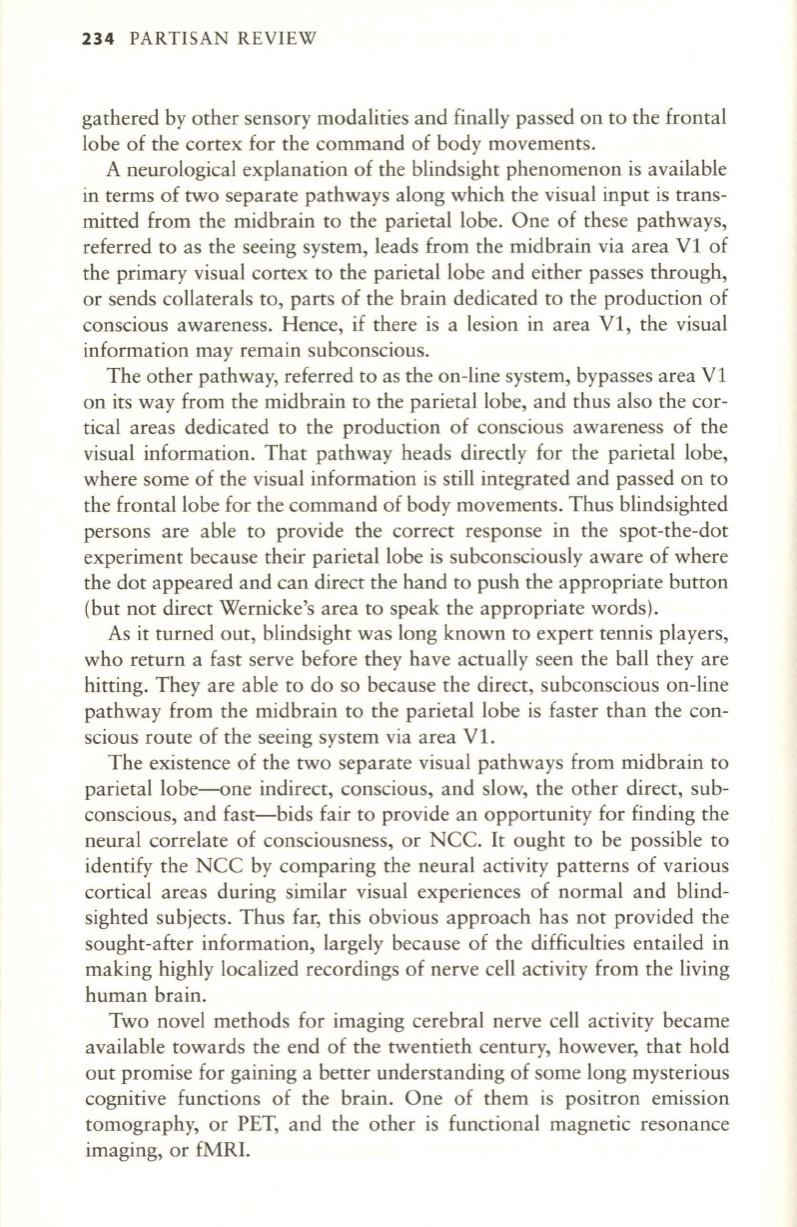
234
PARTISAN REVIEW
gathered by other sensory modalities and finally passed on to the frontal
lobe of the cortex for the command of body movements.
A neurological explanation of the blindsight phenomenon is available
in terms of two separate pathways along which the visual input is trans–
mitted from the midbrain to the parietal lobe. One of these pathways,
referred to as the seeing system, leads from the midbrain via area VI of
the primary visual cortex to the parietal lobe and either passes through,
or sends collaterals to, parts of the brain dedicated to the production of
conscious awareness. Hence, if there is a lesion in area VI, the visual
information may remain subconscious.
The other pathway, referred to as the on-line system, bypasses area VI
on its way from the midbrain to the parietal lobe, and thus also the cor–
tical areas dedicated to the production of conscious awareness of the
visual information. That pathway heads directly for the parietal lobe,
where some of the visual information is still integrated and passed on to
the frontal lobe for the command of body movements. Thus blindsighted
persons are able to provide the correct response in the spot-the-dot
experiment because their parietal lobe is subconsciously aware of where
the dot appeared and can direct the hand to push the appropriate button
(but not direct Wernicke's area to speak the appropriate words).
As it turned out, blindsight was long known to expert tennis players,
who return a fast serve before they have actually seen the ball they are
hitting. They are able to do so because the direct, subconscious on-line
pathway from the midbrain to the parietal lobe is faster than the con–
scious route of the seeing system via area
VI.
The existence of the two separate visual pathways from midbrain to
parietal lobe-one indirect, conscious, and slow, the other direct, sub–
conscious, and fast-bids fair to provide an opportunity for finding the
neural correlate of consciousness, or
Nee.
It
ought to be possible to
identify the
Nee
by comparing the neural activity patterns of various
cortical areas during similar visual experiences of normal and blind–
sighted subjects. Thus far, this obvious approach has not provided the
sought-after information, largely because of the difficulties entailed in
making highly localized recordings of nerve cell activity from the living
human brain.
Two novel methods for imaging cerebral nerve cell activity became
available towards the end of the twentieth century, however, that hold
out promise for gaining a better understanding of some long mysterious
cognitive functions of the brain. One of them is positron emission
tomography, or PET, and the other is functional magnetic resonance
imaging, or fMRI.


